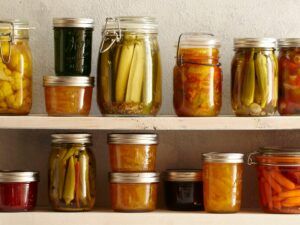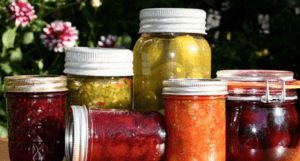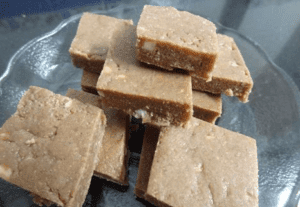
It is law in South Africa for food products to carry accurate labelling, even foods produced in “Home industry” situations. Home industries need to include all the information marked with *
Food manufacturers have in the past used confusing ad-speak to either deliberately mislead the consumer or even lie by omission. This is now illegal in terms of new laws
The new R146 and R429 laws allow only limited claims to be made on the product label or in advertising and call for accurate details to be on the product labels.
Certain requirements must be met and the product has to be tested by an SANAS laboratory following accredited procedures before claims can be made about any product.
- For example, you cannot claim a low GI just by calculation. This must be tested.
- Endorsement of food products can only be claimed if the organisation mentioned is run by qualified dieticians.
- No company is allowed to endorse its own products and no health professional may endorse any product.
- It is unlawful to label a product “Fat-free”, rather it must refer to a percentage even if it is 0%

On your label, you may not say “Nutritious”, “Full of goodness” or anything similar. You may not call your product “Healthy” and the label you may not say “Complete nutrition”, “Balanced nutrition” or “Diabetic friendly”.
Adding “Sugar-free” and “Fat-free” are only allowed if specific conditions are met. The point of these regulations is that the consumer is not misled by implication and consumers are educated by accurate labelling

.What is required on the labels of your food products in South Africa*
- An accurate product name*
- ingredients listed in descending order about the mass*
- list of all possible allergens*
- A batch number*
- Country of origin ( South Africa)*
- A batch number *
- Manufacturers address*
- Net weight or millilitres contents*
- A best-before date.*
You may want to include the following
Supplier Information
- Company Name
- Trading Name
- Business Address
- Postal Address
- Technical Contact Person
- Position
- Title
- Phone
- Fax
- Cell phone (mobile)
Calculation of nutrition values
It is possible to calculate the calories and other nutrients in your product, here are the main values for basic baking ingredients
Egg Yolks
55 calories, 4.5 grams fat 1.6 saturated 210 mg cholesterol 8 mg sodium, 2.7 g protein
Egg white
17 calories,4grams protein 55mg sodium ( folate, selenium, magnesium, potassium phosphorous)
Therefore: 1 average egg = 72 calories 6.7 grams of protein and 4.5 grams of fat
100 grams of white flour
364 calories 0.98 grams fat 76.31 grams carbohydrates, 10.33 grams protein
100 grams of whole wheat flour
339 calories 1.87 fat 72.57g carbohydrate 13.7 grams protein
100 grams of Margarine
526 calories, 59.17 grams fat, 0.6 grams protein
100 grams of butter
717 calories 81.11 grams fat 0.06 carbohydrate 0.85 grams protein
100 grams of sugar
400 calories ( there are no other nutrients in sugar

Some facts
- All vegetable oils are zero cholesterol and all have the same energy value or the number of calories. But, they have different fatty acid compositions.
- There is no such thing as light oil.
- Vegetable oils are extracted in different ways, (Cold-pressed or by using heat) This needs to be labelled
Allergens
It is also the law that all common allergens be listed on the label. Allergic reactions can go from inconvenient to life-threatening. Allergies can cause serious problems. Sometimes even the smallest amount of an allergen can cause some serious problems. There are 14 major allergens which need to be listed. Others such as melons, avocados and onions, aniseed, kiwi fruit, chamomile, linseed, and bananas can cause allergic reactions in some people but these are generally less serious.
An allergic reaction occurs when a body’s immune system mistakes certain foods as a threat. Many food types can cause reactions. Certain types of proteins are the cause of most allergies. Food intolerances are somewhat different and these do not involve the immune system, except Celiac disease which is an allergic intolerance to gluten. Most food intolerances cause difficulties with digestion, swelling, rashes, sometimes diarrhoea bloating, mouth ulcers or even anaemia in some cases.
Common allergens that need to be listed are:
- Cereals that have gluten in them mainly wheat (including spelt, durum, and Khorasan/kamut wheat, rye barley and oats, some baking powder, crumbs, batter pasta, couscous, sauces, soups, and anything dusted with flour.
- Fish – including (crustaceans) crayfish, lobster, crabs, scampi and prawns. Sometimes there are fish products in salad dressings, stock cubes, and of course fish sauce and Worcestershire sauce.
- Eggs are found in cakes biscuits, some meat products, mayonnaise, mousses pasta quiche, some sauces, some pastries and foods glazed with egg.
- Soybeans Edamame beans miso sauce and paste, bean curds, soya flour, tofu, Soya Often found in bean curd, Vegetarian products( textured protein) Soya is found in a lot of Chinese and oriental foods. Ice cream, desserts, and many vegetarian products contain soy
- Milk is obviously in all dairy products. Butter, cheese, yoghurt, and cream, these ingredients are often used in soups and sauces
- Celery the stalks, leaves, seeds, and roots are known allergens. It is found in celery salt, some processed meats, stock cubes, and soups.
- Mustard sauce, mustard powder, and mustard seeds. found in curry, processed meats, salad dressing, sauces, marinades and some savoury breads and biscuits
- Peanuts are also called groundnuts, they are not true nuts but are legumes. Peanuts are found in biscuits, chocolates, peanut oil, peanut butter, it is used in some curries and Eastern dishes. Like satay
- Tree nuts Like pecans, cashews, almonds, and hazelnuts. These are Marzipan and chocolates biscuits and desserts. Nut powders are an ingredient in Asian curries, stir-fried food, and ice creams. Nut oil and nut sauce also will contain the allergens.
- Lupins are flowers that are edible lupin flour and seeds are used in breads, pasta, and pastries.
- Sesame seeds are found sprinkled on bread, it is in humus, tahini and often savoury biscuits
- Sulphur dioxide.is also labelled as sulphites. It is a preservative that is often used for dried fruits like raisins, prunes apricots, mangoes and prunes. It is also found in
- Sesame seeds, often sprinkled on bread, in hummus, tahini, sesame oil and biscuits and sesame oil
- Molluscs Muscles, snails, squid, clams, whelks, scallops, scallops, oysters, abalone, fish stew, and oyster sauce.
